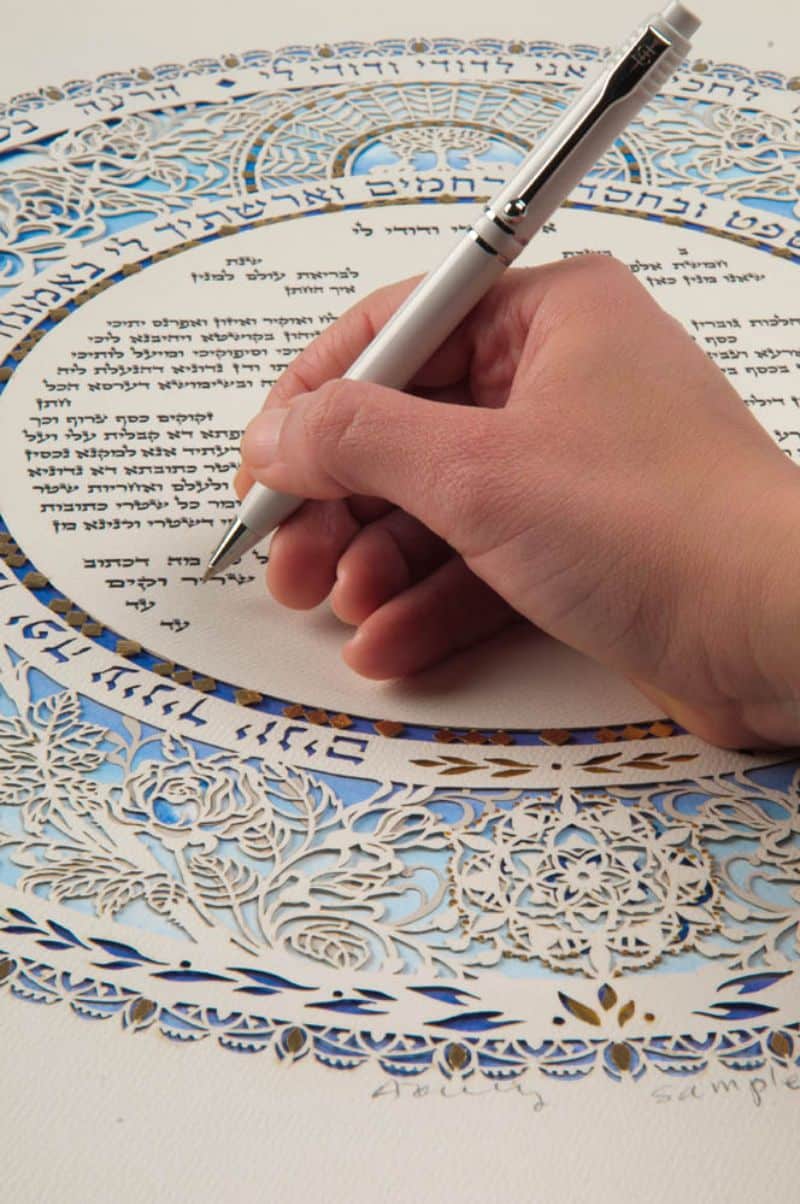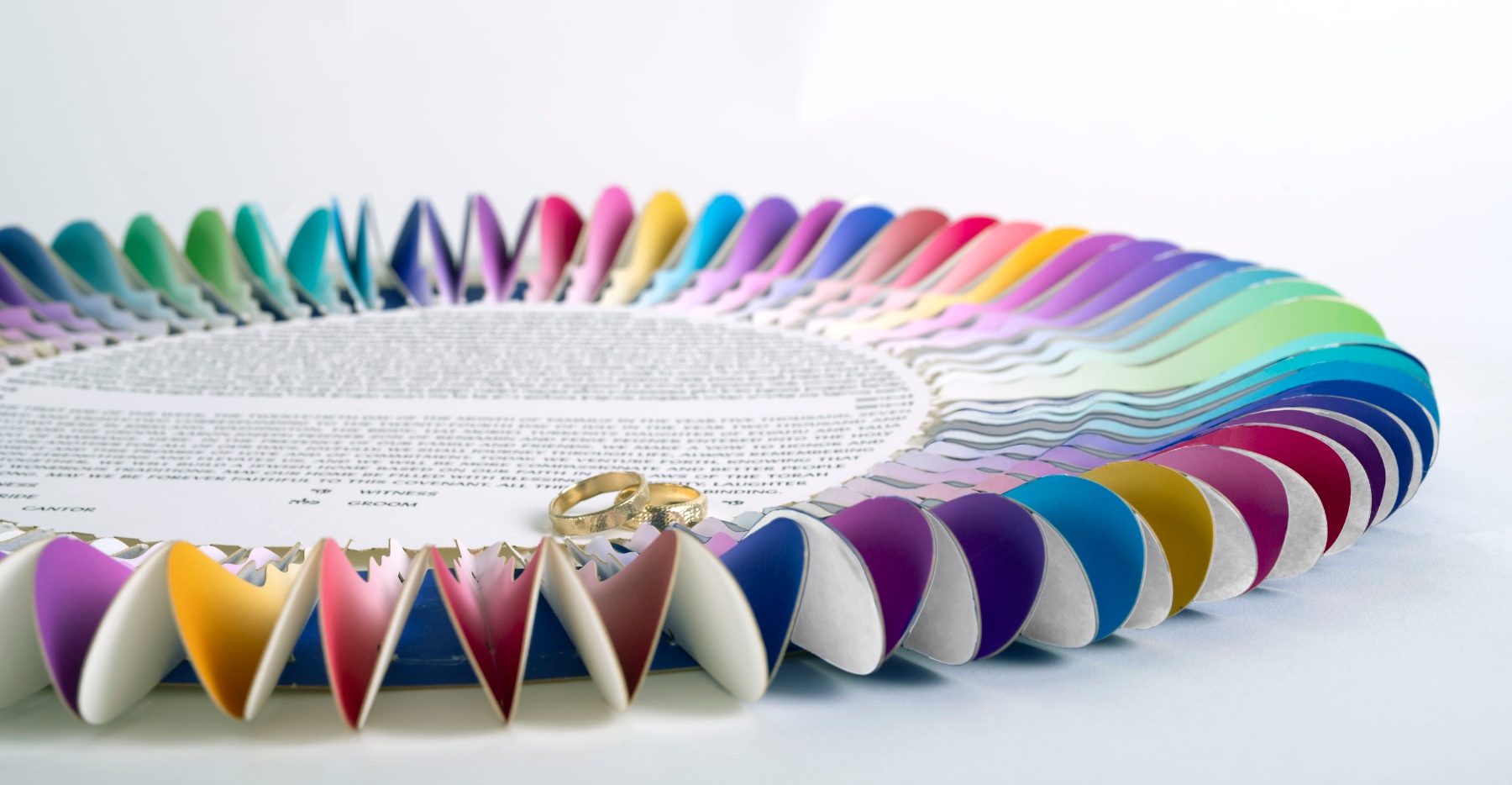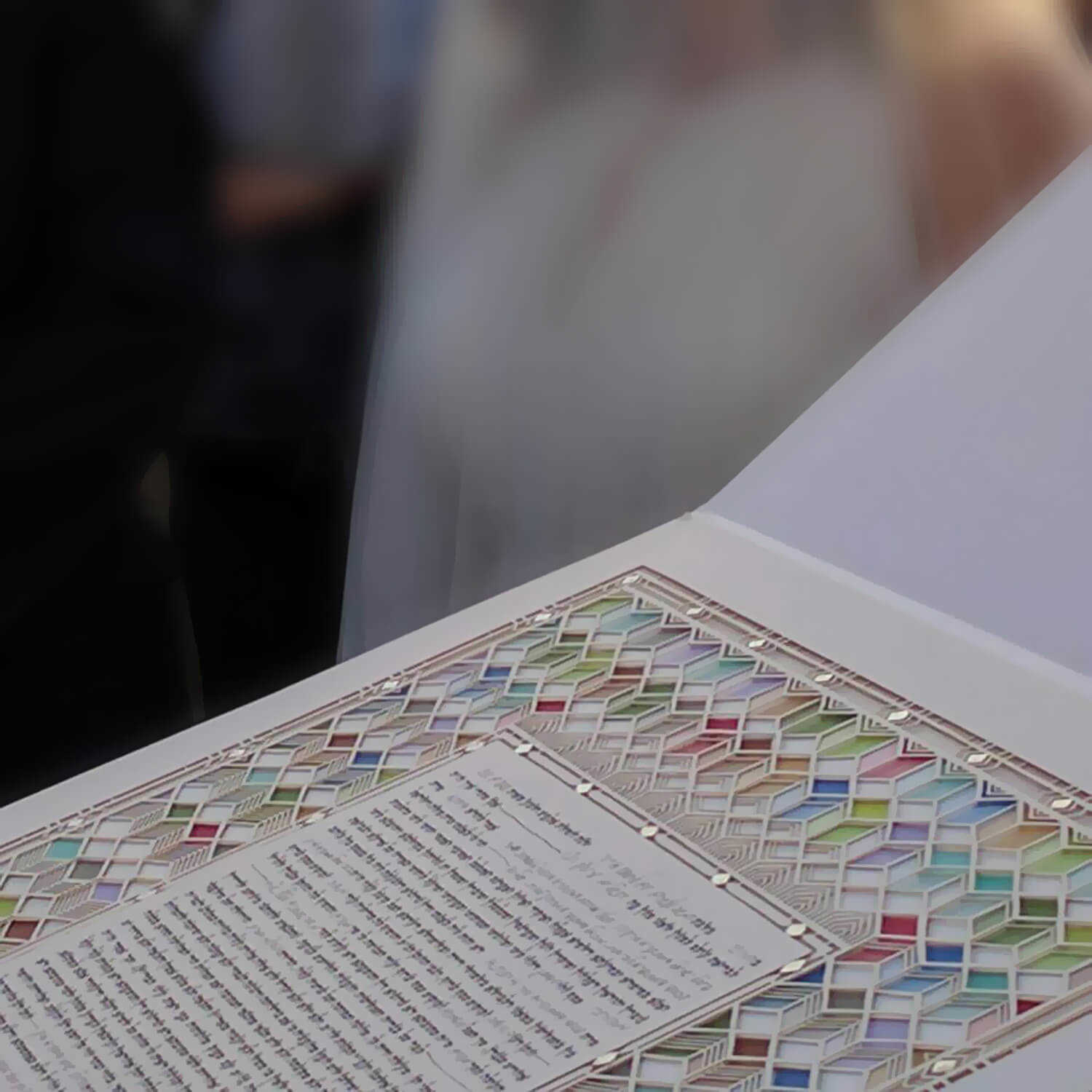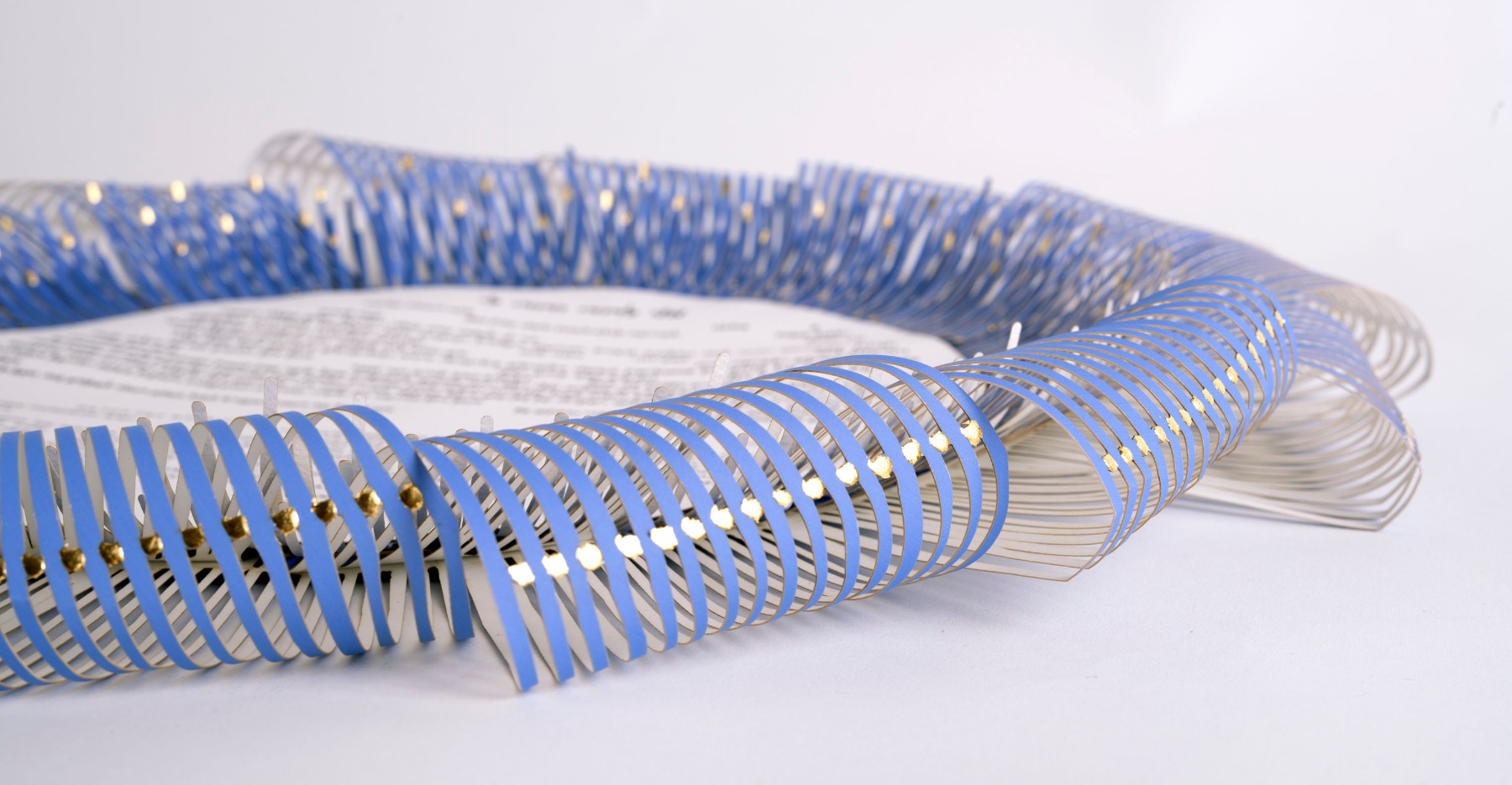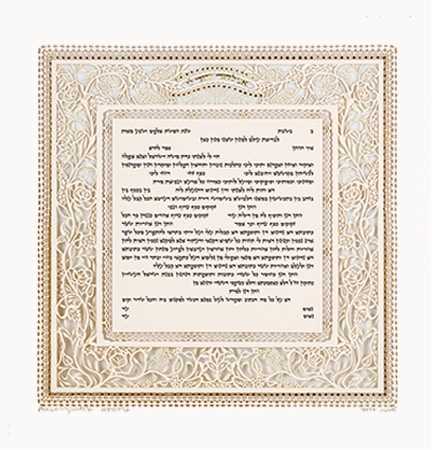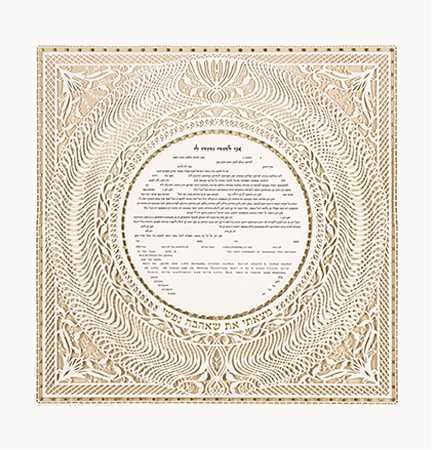Judaic Art
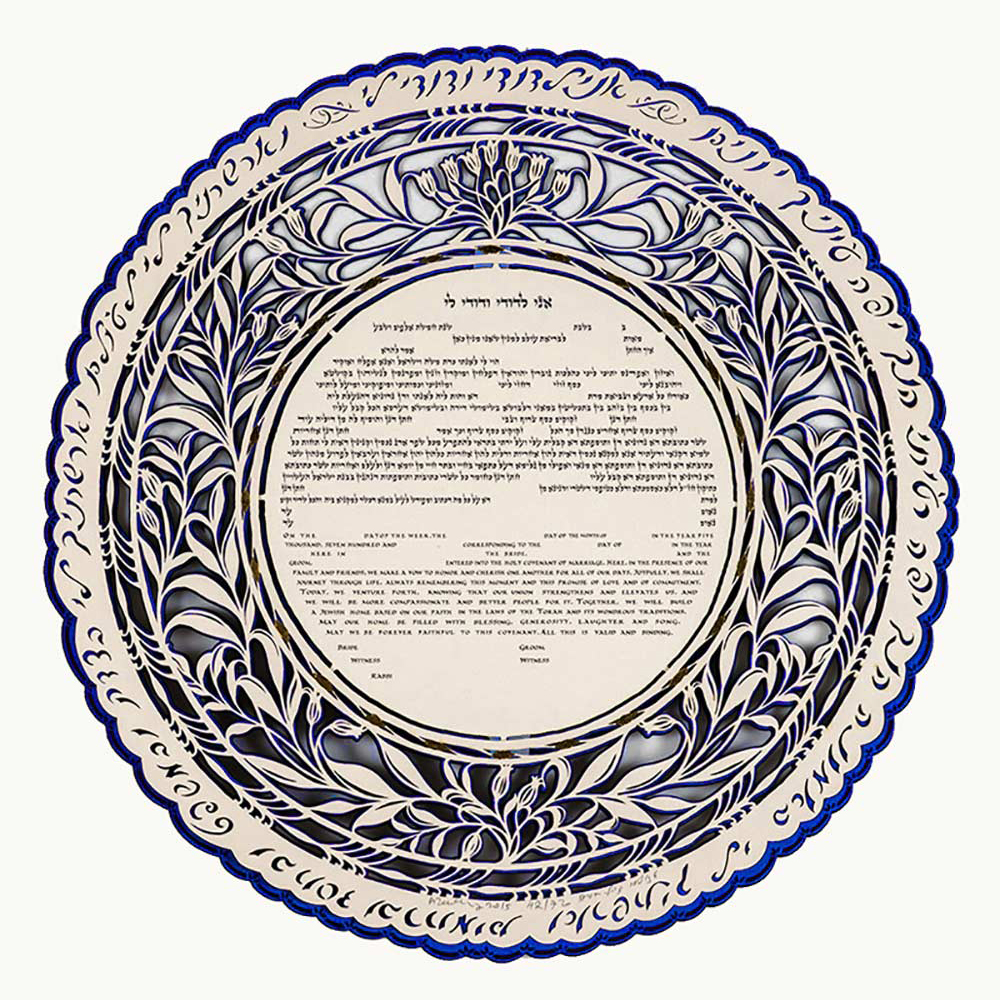
Judaic art, since it’s beginnings, has been guided by two principles, despite their being contradictory. The first being hiddur mitzvah (the brightening or enhancement of the commandments) that supports the creation of beautiful Jewish religious art to aid in the uplifting of the observance of a mitzvah. The second principle deals with the second commandment in that it is forbidden to create graven images, and that no art should be created in case it be used in idol worship.
Commissioned Judaic Art During Biblical Times
Judaic art, however, has flourished In the face of these two contradictory factors, encompassing the hiddur mitzvah and combining it with the avoidance of using any imagery that might be considered idolatry. Consider one of the first pieces of Judaic art commissioned in the Torah was for the Tabernacle. G-d designated Bezalel, a thirteen-year-old from the tribe of Judah, to construct it and gifted him with the ability to weave, work with gold, silver and copper, as well as stone cutting and wood-carving for him to construct the Tabernacle.
Judaic Art in the Home
From there Judaic art has flowed into Jewish homes in various forms, from religious items to paintings depicting Biblical scenes and life, incorporating Biblical as well as inspirational text, and even day-to-day Jewish life across the Diaspora. Judaic art is most prominently seen in religious objects, such as the challah cover or plate on the Sabbath table, the kiddush cup to aid in sanctifying the Sabbath or holiday meal, the mezuzah case adorning the doorpost of a Jewish home. Holiday related objects aren’t to be forgotten, consider one of the most iconic objects the menorah for Chanukkah, from there the seder plate for Passover or the simple honey dish for Rosh Hashanah.
Judaica can be integrated into much anything from trivets in the shape of a pomegranate, to napkin holders decorated with Sabbath or Holiday imagery.
Finally, the obvious and often the first form of Judaic art to be present in a Jewish home, the ketubah.
A masterful piece of artwork that the newlyweds grace their home with. Some keep it in a private place to avoid the evil eye, while other couples place it in a prominent location within the house to be displayed for all to see. Whatever you choose, you can’t go wrong by commissioning the talented artistry of Danny Azoulay.

